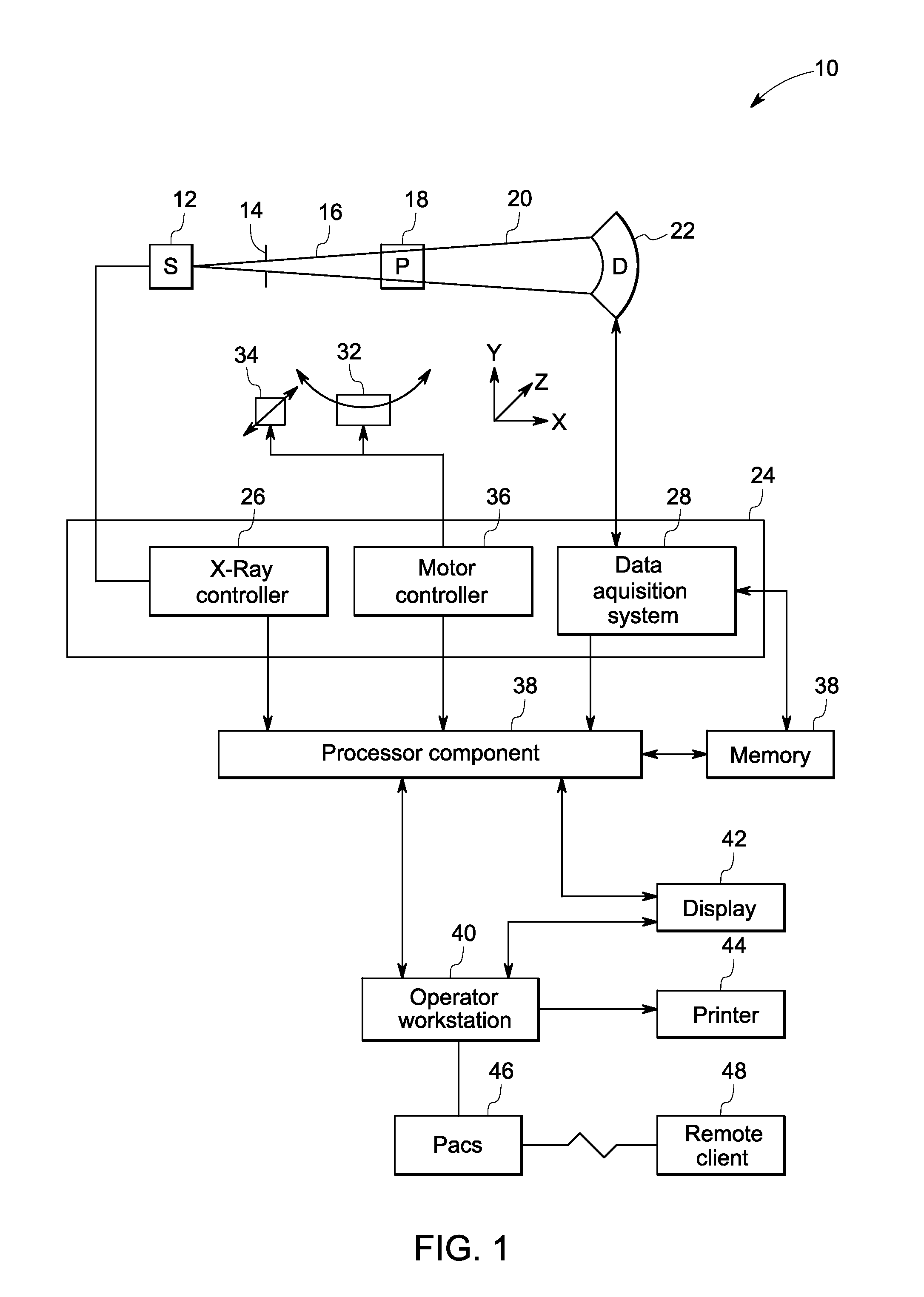Iterative reconstruction in image formation
a reconstruction technique and image technology, applied in the field of image formation, can solve the problems of time-consuming and general computational intensity of the reconstruction technique, and achieve the effect of improving the accuracy and reliability of the reconstruction techniqu
- Summary
- Abstract
- Description
- Claims
- Application Information
AI Technical Summary
Benefits of technology
Problems solved by technology
Method used
Image
Examples
Embodiment Construction
[0014]Although iterative reconstruction (IR) approaches improve various aspects of image quality and have demonstrated clinical dose savings, the associated long computation time is an impediment to the adoption of such approaches in clinical environments. The high computation cost of IR is a result of the complexity of various geometrical, physical, and statistical models being employed by IR and of the large size of data acquired by modern multi-slice CT (or other modality) scanners.
[0015]Many types of algorithms can be used for minimizing the cost function employed by such IR approaches. Sequential algorithms, such as iterative coordinate descent (ICD), converge quickly if given a good initial estimate but have relatively large computation cost per iteration. Simultaneous algorithms, such as gradient-based methods with various surrogate functions, perform forward- and back-projection operations over the whole image volume, and thus have a higher level of parallelism. However, in ...
PUM
 Login to View More
Login to View More Abstract
Description
Claims
Application Information
 Login to View More
Login to View More - R&D
- Intellectual Property
- Life Sciences
- Materials
- Tech Scout
- Unparalleled Data Quality
- Higher Quality Content
- 60% Fewer Hallucinations
Browse by: Latest US Patents, China's latest patents, Technical Efficacy Thesaurus, Application Domain, Technology Topic, Popular Technical Reports.
© 2025 PatSnap. All rights reserved.Legal|Privacy policy|Modern Slavery Act Transparency Statement|Sitemap|About US| Contact US: help@patsnap.com



